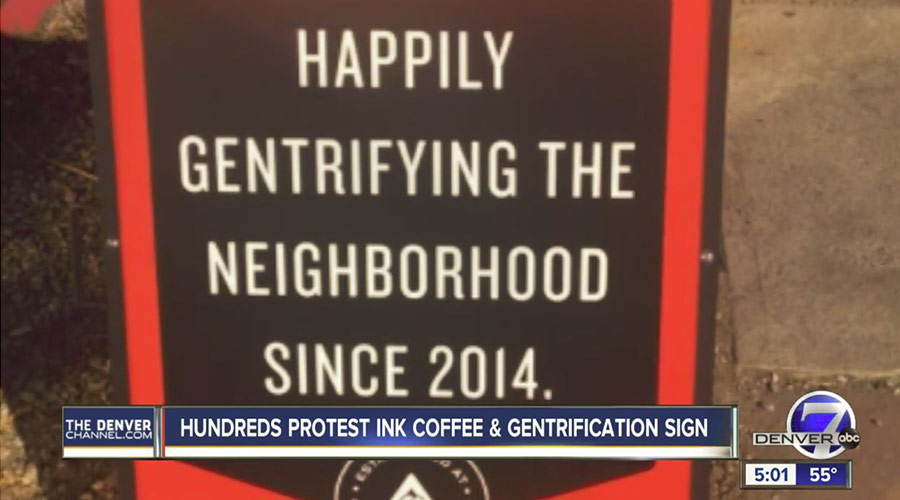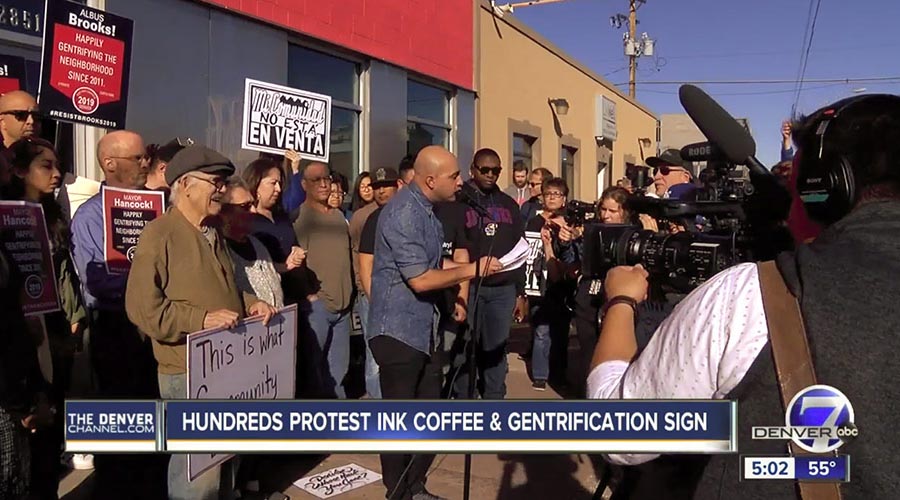Urban Politics In, of and Beyond the City
As an increasing majority of the world’s inhabitants now live in towns and cities, it has become commonplace in academic and media debates to talk grandly of the “urban age” we all now live in. Optimism and pessimism collide in these discussions – the disastrous effects of urbanisation on the world’s climate resources and the harsh realities of life for many urban inhabitants (Davis 2007) mix with the hope of progress indelibly urban and the promise of “smart” urban living (Glaeser 2012). While platitudes tell us little about the likely outcomes of global or planetary urbanisation (Brenner and Schmidt 2015) it is clear that the urban has become the “centre stage of human contest” (Gleeson, 2015, 2). In other words, the urban – our towns and cities – have become essential to a range of struggles, perhaps even the common denominator of ecological, economic and social conflicts. But what does this mean for our understandings of politics?
Context: city, urban and urbanisation
Urban scholars have become increasingly bold in their assertions of the importance of cities, even if they cannot agree on whether to refer to the “city” or “urban” or “urbanisation” (Davidson and Iveson 2015). The confusion stems from the realisation that the boundaries between countryside and city are (and have always been) unclear, with urban elements (urban sprawl) apparent in the former and rural in the latter (farms). It has also become increasingly clear that processes of urbanisation envelop the globe and are fundamental to capitalism. Following the French urbanist and philosopher Henri Lefebvre, contemporary geographers like David Harvey (2012) have noted that cities and towns are fundamental to accumulation, and that patterns of urbanisation, like suburbanisation and gentrification, are bound up with the techniques and trends of global capitalism such as mass production and financialisation of the economy. Furthermore, the reach of urban lifestyles is clear far beyond the official limits of the city, e.g. the weekend country homes of wealthy urbanites. Overall, we may not know how to define the city, nor be sure of the essence of the urban if it is also visible outside the city, but we can be certain that planetary urbanisation is the dominant social process, and that this must have political implications.
Dimensions of a global urban politics
It is possible to delineate three dimensions along which contemporary politics is becoming ineradicably and increasingly both global and urban:
- Politics is bound up with the uneven global processes of capitalist urbanisation, which creates challenges and conflicts in urban areas which explicitly link the global and local
- Politics is enmeshed in the urban way of life, which is no longer confined to the limits of the town or city, but is a set of concerns, ways of acting and economic modes that envelop the countryside and shape the ways in which people act politically
- Politics is still acted out and imagined through sites and stages of urban areas, such as squares and streets, where the density and diversity of people provide particular possibilities for political mobilisation
As a consequence of these developments, the nation state sovereignty is increasingly de-centred. This does not mean that the nation state has disappeared but rather that it is increasingly one of many loci of political organisation (Magnusson 2015). These three dimensions of urban politics suggest a set of concerns, spaces and types of political action that may not fit readily with conventional forms of acting politically (e.g. through political parties, parliament, elections). This is not to suggest that representative democracy will soon collapse, even if it appears to be in something of a crisis (Hay 2007). Rather it is to confirm that politics is being rescaled away from the nation state and its main political institutions: that a global urban politics (Boudreau 2017) is emergent. Global urban politics is one in which urban spaces become politicised through local as well as global dynamics, where the specific and the general merge and engender political struggles.
Example: gentrification
Gentrification is one of the defining processes of contemporary urbanisation, even if the term itself dates back to the 1960s (Slater 2011 571). Gentrification refers to: the upgrading of usually older inner city areas, the shift from rental to owning, property prices increases and the displacement of lower income residents by those able to pay higher rents or property prices. As wealthier inhabitants of a city follow ‘hipsters’ to an ‘up-and-coming’ area looking for lower property prices and an urban lifestyle they may later be followed by international property investors, e.g. representing pension funds companies, looking for reliable long term returns through maximising rental prices. Such processes have, in various hues, transformed inner city areas around the globe and not just in major cities, such as London, but also in smaller cities, like Sheffield (Lees 2000), and in the global south as well as north (Lees 2000). Gentrification has often become a focus for political conflicts in the city and can be seen as emblematic of global urban politics. Gentrification is both truly a global process (Lees et al 2016), being entwined with the movements of global capital in its search for profit (dimension 1), thoroughly local in that it begins with the movements of inhabitants of a city to a particular area and leads to the displacement of other residents to other parts of the city and beyond and entirely urban in that it is bound up with urban lifestyle patterns (dimension 2). It often results in protest and political activism in neighbourhoods, which in turn are often linked to wider urban social movements such as “right to the city”. As well as being embroiled in processes of planetary urbanisation, integral to the urban way of life, gentrification has sparked political protest in which urban spaces become crucial, from protestors gathering in the streets to the squatting of places such as buildings to deliver political messages (dimension 3). In many cities gentrification has become a key political issue, one which captures the inequalities of cities and society more generally. It has hence become a focal point for political movements contesting the global capitalist system, and the ways in which it shapes and is shaped by urban forms and processes.
Ink coffee sign and protest against gentrification in Denver
 |
 |
Extract from Shannon M. Hoffman, "Demonstrators protest ink! Coffee sign celebrating gentrification" The Denver Post, November 25, 2017.
Conclusion
This short piece has outlined three dimensions of contemporary urban politics in, of and beyond the city: (1) the uneven global processes of capitalist urbanisation; (2) the urban way of life; (3) sites and stages of urban areas. It has argued that the politics of urban areas are increasingly bound up with wider processes of globalisation. Hence, even if we think of traditional urban political issues such as transportation, we usually have to consider global as well as local dimensions, e.g. in terms of foreign ownership or climate change. If we can now speak of planetary or global urbanisation then we must then consider carefully its conceptual, empirical and normative implications.
References
- Boudreau, J-A. (2017) Global Urban Politics: Informalization of the State. Polity Press, Malden MA.
- Brenner, N. and C. Schmid (2015) “Towards a new epistemology of the urban?”. City 19.2/3, pp 151—82 [pdf].
- Davidson, M. and K. Iveson (2015) “Beyond city limits”. City 19.5, pp 646–664.
- Davis, M. (2007) Planet of Slums. Verso: London
- Glaeser, E. (2012) Triumph of the City. Pan Books: London
- Gleeson, B. (2015) The Urban Condition. Routledge: London
- Harvey, D. (2012) Rebel cities – from the right to the city to the urban revolution. Verso: London.
- Hay, C. (2007) Why We Hate Politics. Polity Press: Cambridge.
- Lees, L. (2000) “A reappraisal of gentrification: towards a 'geography of gentrification'”. Progress in Human Geography, 24.3, pp 389–408.
- Lees, L., Shin, H. and Lopez-Morales, E. (2016) Planetary Gentrification. Polity Press: Cambridge.
- Magnusson, W. (2015) Local Self-Government and the Right to the City. McGill-Queen’s University Press: Montreal/Kingston.
- Slater, T. (2011) “Gentrification of the City” in G. Bridge and S. Watson (eds) The New Companion to the City (Blackwell: Oxford) pp 571-585.
Dr Ross BEVERIDGE,
Urban Studies Foundation Senior Research Fellow, Urban Studies, University of Glasgow, 25 Bute Gardens, Glasgow G12, United Kingdom.
Cite this text:
Ross Beveridge, "Urban Politics In, of and Beyond the City", Géoconfluences, January 2018.
URL : https://geoconfluences.ens-lyon.fr/programmes/dnl/dnl-hg-anglais/urban-politics
Pour citer cet article :
Ross Beveridge, « Urban Politics In, of and Beyond the City », Géoconfluences, janvier 2018.
https://geoconfluences.ens-lyon.fr/programmes/dnl/dnl-hg-anglais/urban-politics



 Mode zen
Mode zen



